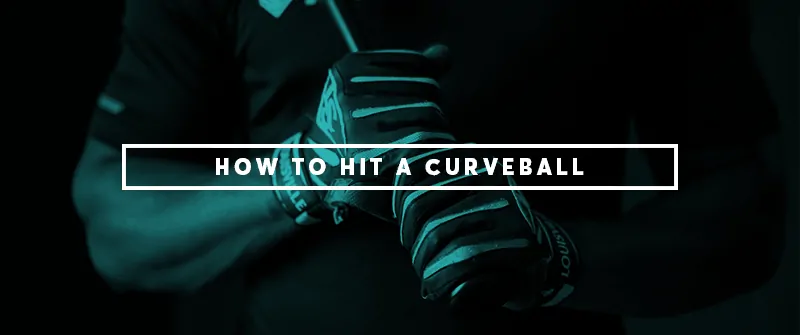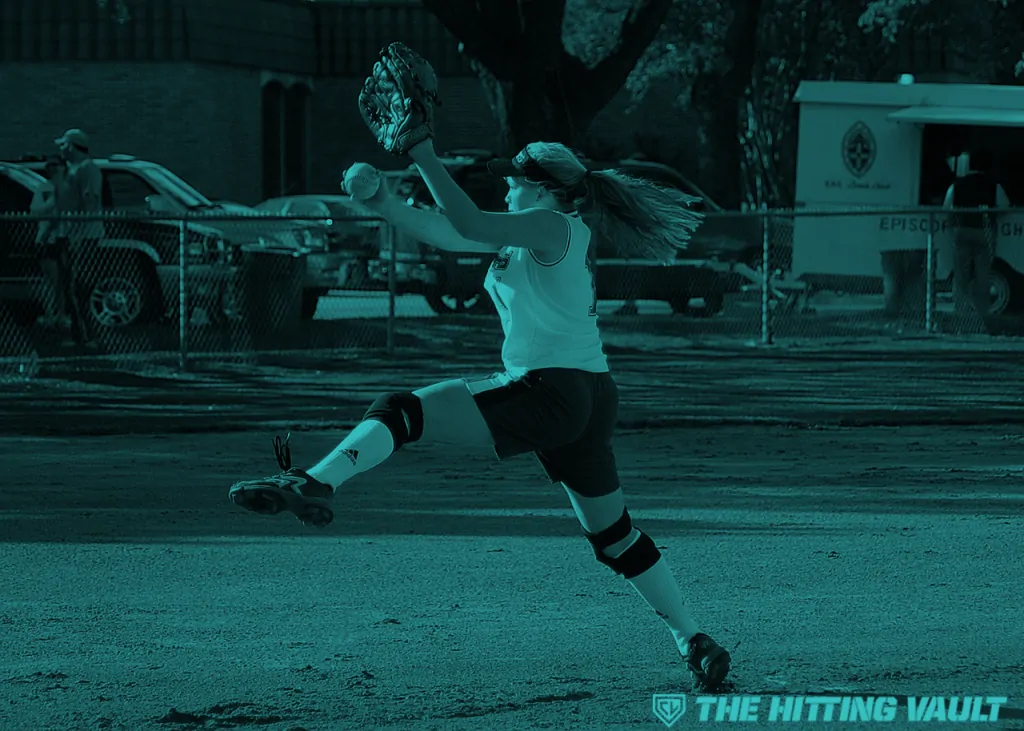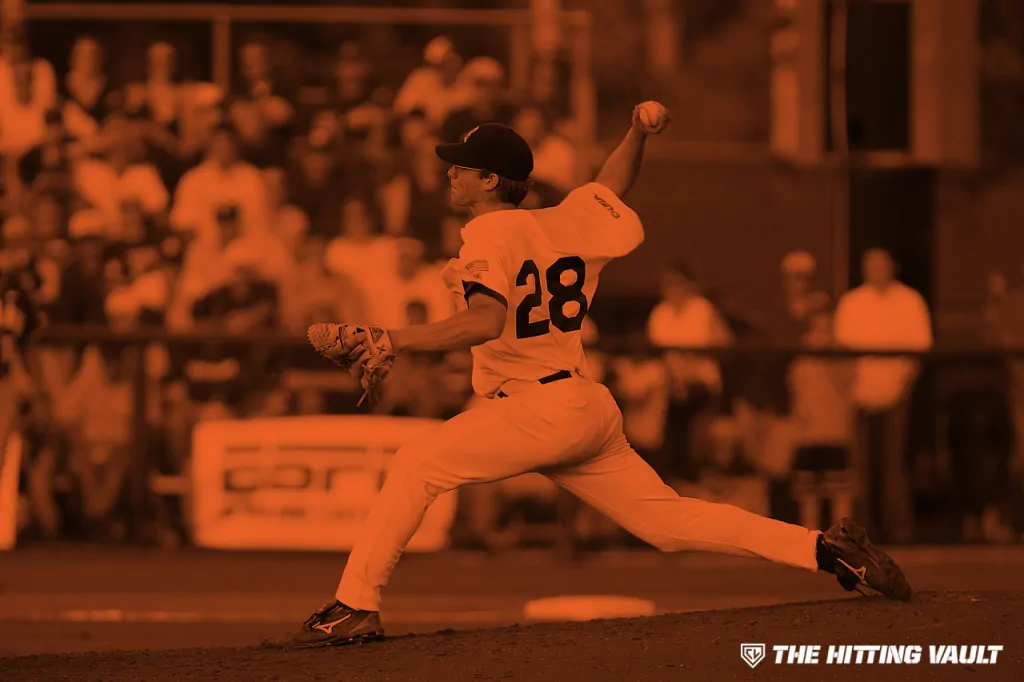How to Hit a Curveball and Other Off-Speed Pitches

Table of Contents
One of the toughest things to master as a youth baseball or softball player is how to hit a curveball. As the competition level starts to increase, and pitchers get older and more developed we see them have a little more control over their pitches. Up until then, hitting can seem like a breeze for a kid with a good swing and coordination!
The pitcher’s goal with curveballs and off-speed pitches is to keep the hitter off balance with not only movement, but also change in speed. When pitchers start throwing curveballs and off-speed pitches they can really throw a young hitter off because they’re not used to the change in speed. This is where the art of pitch recognition and adjusting comes into play.

For this article we will cover how to hit a curveball, and other offspeed pitches. Please keep in mind, when we refer to “curveball” throughout this article, we will be referring to the baseball curveball. Softball curveballs are normally the same speed as their other pitches. When we say “off-speed” we’ll be referring to changeups as well as other pitches that are slower than the pitcher’s normal pitch speed.
Table of Contents:
- Common Off-Speed Pitches in Softball
- Common Off-Speed Pitches in Baseball
- Mental Approach
- Pitch Recognition for Hitting a Curveball
- Hitting Drills to Improve Pitch Recognition
- Proper Mechanics for Hitting a Curveball
- Frequently Asked Questions
Common Off-Speed Pitches in Softball
If a softball pitcher has an “off-speed” pitch, they typically throw just one of the following and are roughly 4-8 mph slower than their fast pitches:
- Off-speed Curveball. With a 9 o’clock to 3 o’clock spin, this goes well combined with a regular speed curveball. A pitcher will often throw a regular curve and then the next one throw as an offspeed curve to get the hitter to swing and miss or make weak contact out.
- Off-speed Rise ball. A perfectly spun offspeed rise will have a 6 o’clock to 12 o’clock spin. If the spin is slightly off it will be 5-11. Similar to the offspeed curve, this combines well with a regular speed riseball. And can cause a hitter to either pull it foul getting the pitcher ahead in the count, and or will use it on a hitter that is overly aggressive and early on their other pitches up in the zone, causing them to pop up or miss it completely.
- Off-speed Drop ball. These pitches will have “top spin” so 12-6. Many pitchers will use an off-speed drop as their actual changeup because of its natural downward movement. If they miss, they’ll miss down and not up in the zone for a homerun. Pitcher’s like to use this pitch on a hitter that’s ahead timing-wise and/or struggles with pitches low in the zone.
The Softball Changeup. All pitchers have a change up. Good changups are 10-12 mph slower than their fast pitches. In softball, while technically it is an “offspeed” pitch, nobody refers to it as an offspeed pitch. The reason being, in softball all the aforementioned offspeed pitches have the same exact spin as their full speed pitch (ie off speed curve has the same spin 9-3 as the regular speed curve). A softball changeup is more of its own pitch with it’s own separate rotation.

Common Off-Speed Pitches in Baseball
For baseball hitters, there are a few different off-speed pitches that we begin to see as we advance in the game. Here are a few of the most common.
- Changeup: One of the most common off-speed pitches we see in baseball is the changeup. Pitchers use this pitch to take some velocity off their fastball and get hitters off balance. Since a changeup looks very similar to a fastball, it can be tough for hitters to recognize and stay back when they are expecting a higher velocity and the ball to get on their hands quicker.
- Curveball: The curveball is one of the most popular off-speed pitches for baseball pitchers. Hitting a curveball provides a unique set of challenges because the pitch is moving (commonly 12-6 with a downard break to it) and also the pitch is at a reduced speed to get hitters off balance. There are a few different variations of how a curveball will travel depending on the pitcher’s arm slot.
- Slider: Similar to a curveball, a slider will have more of a “flat” break to it as opposed to the 12-6 curveball. This pitch also comes with a reduced speed to keep hitters off balance and is commonly thrown to get hitters to chase pitches off of the plate.

Mental Approach
The mental approach is crucial to hitting a curveball or other offspeed pitch successfully. Starting with confidence. Confidence can come on game day from a number of different areas, it’s more than just telling yourself “I can do it.”
Step 1.) Separation in the Preparation
In pre-game and between innings, pay attention to the pitcher as they warm up. What does their off-speed spin look like? What is it doing? Are they only throwing it down and out? Can they throw it for a strike?
pay attention to the pitcher as they warm up. What does their off-speed spin look like? What is it doing? Are they only throwing it down and out? Can they throw it for a strike?
Step 2. ) Stay Engaged in the Dugout
During the game watch your teammates’ at bats. Are they only getting the offspeed when the hitter is down 0-2 or 1-2? Hitters tend to get jumpy when they get down two strikes, pitchers take advantage of that knowing they can keep the ball down and off the plate some and still have the hitter swing.
Or does the pitcher have enough confidence and control that they are using it early in the count? Pitchers tend to work in patterns especially at younger ages. And regardless of age, pitchers will keep doing what’s working! If every hitter on your team is going up there being passive until later in the count, the pitcher will probably keep coming with normal speed pitches early, and then throw in an offspeed when it’s 0-2, 1-2 to get them chasing.
Use your time in the dugout and throughout the game to pick up on these things, it will make a huge difference during your next at-bat.
Similar reading: Two Strike Hitting: Why Striking Out isn’t the Worst Outcome
Picking up on the pitcher’s tendencies is huge. If you take the time to watch, get your timing, see how they’re pitching your teammates etc, you will not feel like you’re going up there blind. This gives confidence that you know what to expect. And we all know the mental side of hitting is so vital to a hitter’s success.

Pitch Recognition for Hitting a Curveball
Along with having knowledge and confidence going up to the plate, actually recognizing the curveball or another off-speed pitch is the next step in being able to hit it. For baseball, there are different arm slots: over the top, three-quarters and side arm. Again, watching warm ups to get an idea of how the pitcher throws is critical to having success.
Picking up the Spin
One of the most common tips we hear for helping to hit a curveball is to pick up the spin. Off-speed pitches tend to put a different spin on the ball that can be recognized by the hitter.
Softball: In softball, the offspeed rise, offspeed curve and offspeed drop ball will all have the same spin as their faster counter part pitches, but will typically have tighter spin and more rotations than the other faster pitches. For regular softball changeups, they too will typically have more spin than normal pitches, and will either have 12 o’clock to 6 o’clock spin (top spin), or will be more of a 11 o’clock to 5 o’clock spin. Occasionally pitchers will be able to throw a knuckle ball or close to it. In this case, there will be no spin (on the very good ones) or less spin than any of their other pitches.
Baseball: In baseball, we hear coaches all the time talking about picking up the spin of a curveball and off-speed pitches. While this is true, it is no easy task and requires a ton of practice. For hitting a curveball, hitters will notice the rotation of the ball changing right as it leaves the pitchers hand. In general, the spin of a fastball will just look like a blurr since it is rotating faster, the curveball on the other hand has a slower rotation and makes it easier to pick up the spin. Once the spin is picked up and we can identify the pitch being thrown, we can then react based on the movement.
Pitch Location
Recognizing whether the curveball or other off-speed is actually a good pitch to hit will be important to being able to hit it. Often times, we see hitters chasing balls that are bouncing on top of home plate, or pitches that may start up, but out of the hand are already 3 inches outside. The key is to hit a “poorly located” offspeed. Often referred to as a “hanger.” Hit the pitcher’s mistakes, don’t help them out by chasing a good pitcher’s pitch. Instead attack the ones where they make a mistake.
Hitting Drills to Improve Pitch Recognition
“Yes or No” drill: Have the hitter say “Yes!” and swing if it’s a good pitch to swing at, or “No!” and let it go by. The key is to say, yes or no, as early as they can basically right out of the hand of the front tosser, or machine. For the good pitching machines that are pretty consistent, set it up so it’s right on that border line of the zone (either in, out, up, down etc) and then when it’s slightly too low they will have to lay off of it. And when it does hit the bottom of the strike zone they should attack it.
Related reading: Teaching Pitch Recognition
Ready to start crushing off-speed pitches? Start learning right now.
Coach Lisle has a simple hitting plan for you. Get access to one of softballs most effective hitting coaches. Learn from over 100+ exclusive videos for members and step-by-step instruction so you’ll know exactly what your swing is missing. You can unlock your power at the plate. Over 970k people follow Coach Lisle and The Hitting Vault. Find out why.
Putting colors or numbers on tennis balls: Prior to contact, hitters have to call out the color or number that is drawn on the ball. This will be difficult at first, so start by trying to throw a knuckleball, where there’s no spin. Palming the ball more can help lessen the spin for front toss. As they improve, throw it regular where there’s normal spin on it. This forces the hitter to really focus on the ball, which will translate to them being able to recognize the spin of the ball.
Proper Mechanics for Hitting a Curveball
So you have a good mental approach coming up to bat, you’ve recognized the curveball or other offspeed pitch, now to actually hit it! You may have the best vision and reaction time, but if your mechanics are preventing you from letting you adjust after you recognize it, then you will continue to struggle.
As hitters we need to get into a good launch position (when the front heel hits). Launch position sets our body up in a good (or bad) position to hit from. In this position your hands should still be up and back. This helps creates separation that correlates to power, but also to not letting your hands start drifting towards the ball too soon.
After you get to a good launch position, which includes having bend in our front knee, hitters must maintain the bend, in order to help keep their hands back for that split second longer. Some hitters may feel like they “sink” into their front knee. This front leg adjustability allows the ball more time to travel before your barrel starts working fast towards the ball.
After that slight delay of the hands moving is when the hitter unleashes. We should still be swinging hard and aggressive at curveballs and offspeed pitches. We’re just delaying the firing after we recognized it’s offspeed. Slowing down the swing completely will not allow the hitter to hit for power. So it’s important to follow these steps:
- Prep prior to at bat (as discussed earlier)
- Recognize the pitch is offspeed
- Decide whether it’s a pitcher’s mistake
- Be in a good launch position
- Keep bend in the front leg for longer
- Swing Hard!
Frequently Asked Questions
Depends on the pitcher. But most often, especially prior to college, when the hitter is behind in the count (0-2, 0-1)
The pitcher may give it away with their grip, the spin of the ball, and sometimes the initial direction of the ball leaving the pitcher’s hand.
Yes and no. As hitters we should go up to the plate with a plan on what we want to attack. Sometimes our plan has to change during the at bat. If a pitcher is regularly going to their curveball or changeup as soon as hitters get to two strikes, then yes, expect to hit that pitch. So if pitchers have consistent tendencies, then yes take that risk.
You simply load later. Your swing should look the same, the only thing that would change is when you start your load. Be careful though, some pitchers, catchers and coaches may pick up on that and will purposefully not throw you anything offspeed if they recognize that your front foot is getting down later.
Have your best curve/offspeed pitcher throw live to you! Maybe there’s a specific pitcher you know you’re going to face this week that has good offspeed. Or leading up to a tournament would be great as well! Get some reps in prior to help you prepare. That will help with the mental side of getting in the box too! You could start by alternating fastball, curveball, fastball, curveball, really focusing on picking it up early. Then have the pitcher starting randomly mixing them in. Fast, fast, off-speed, fast, off-speed etc.



